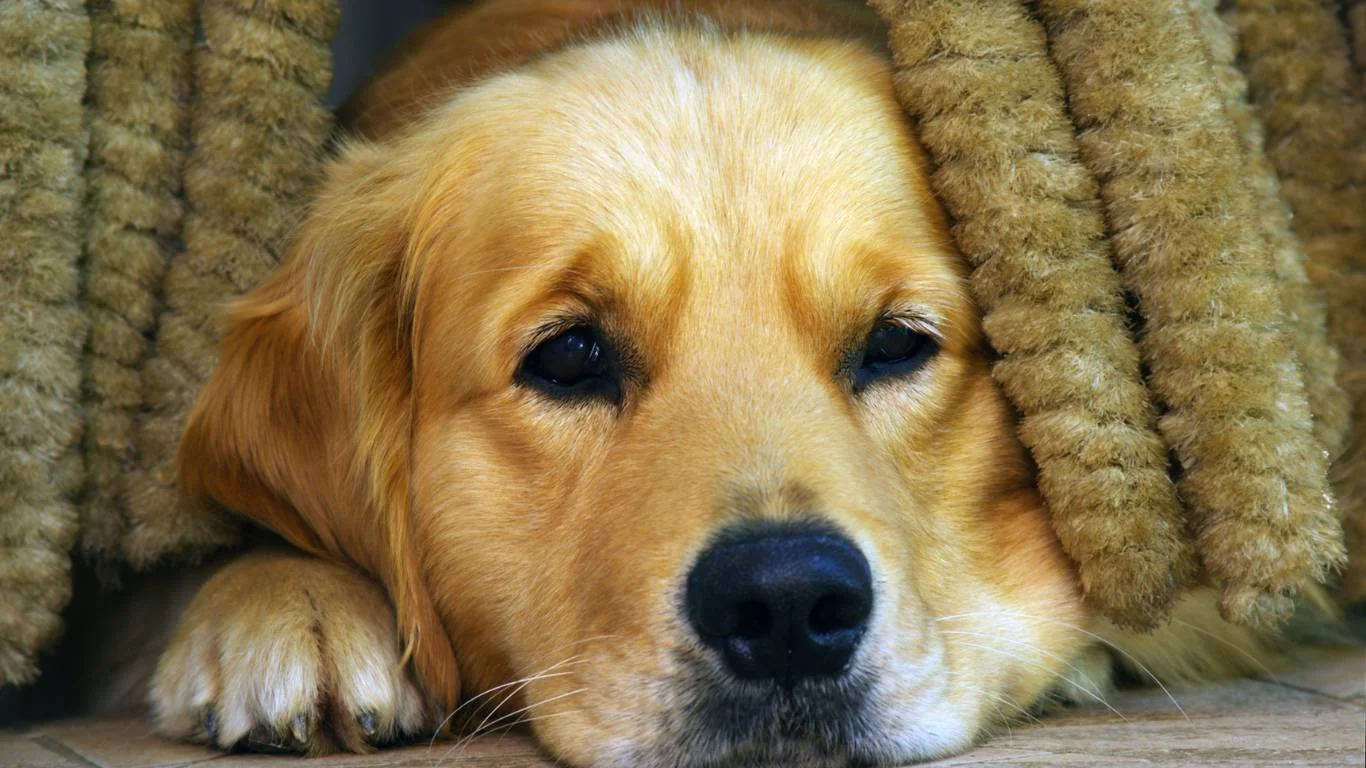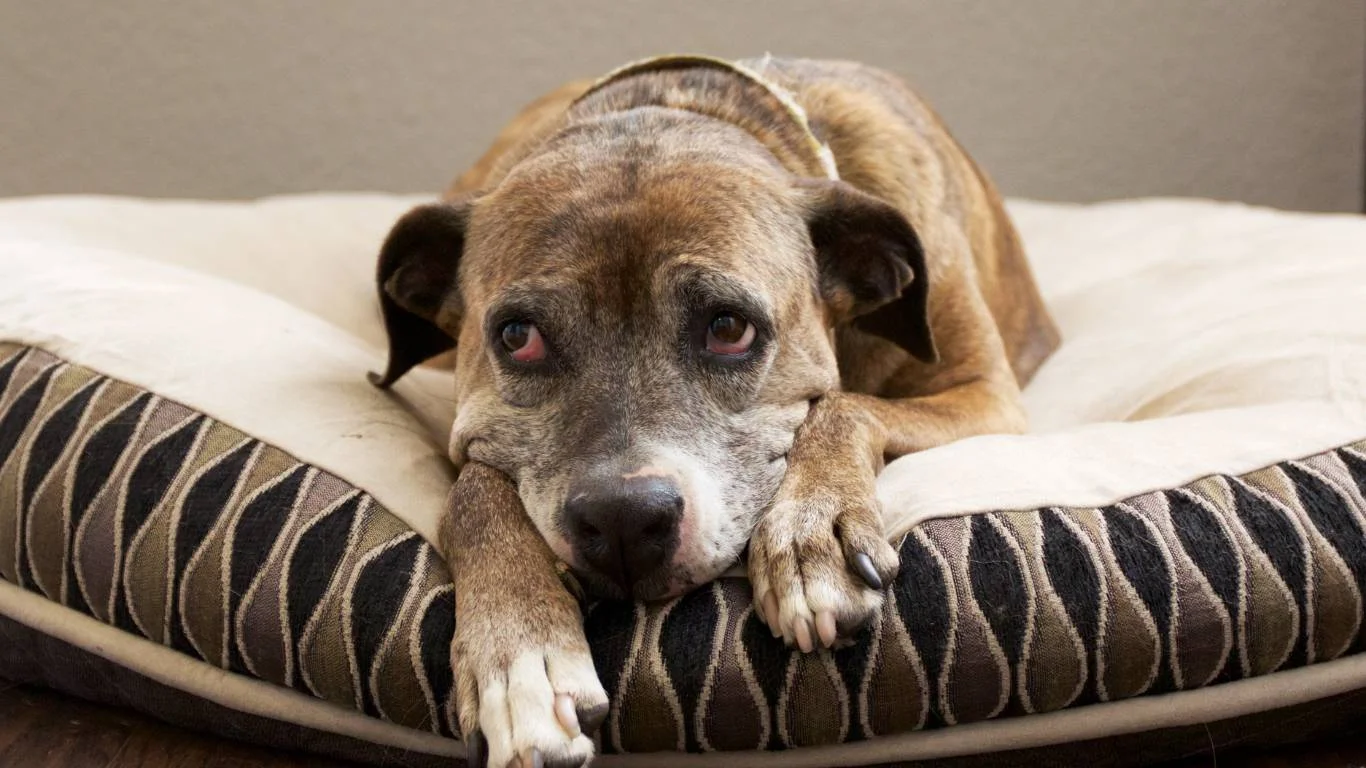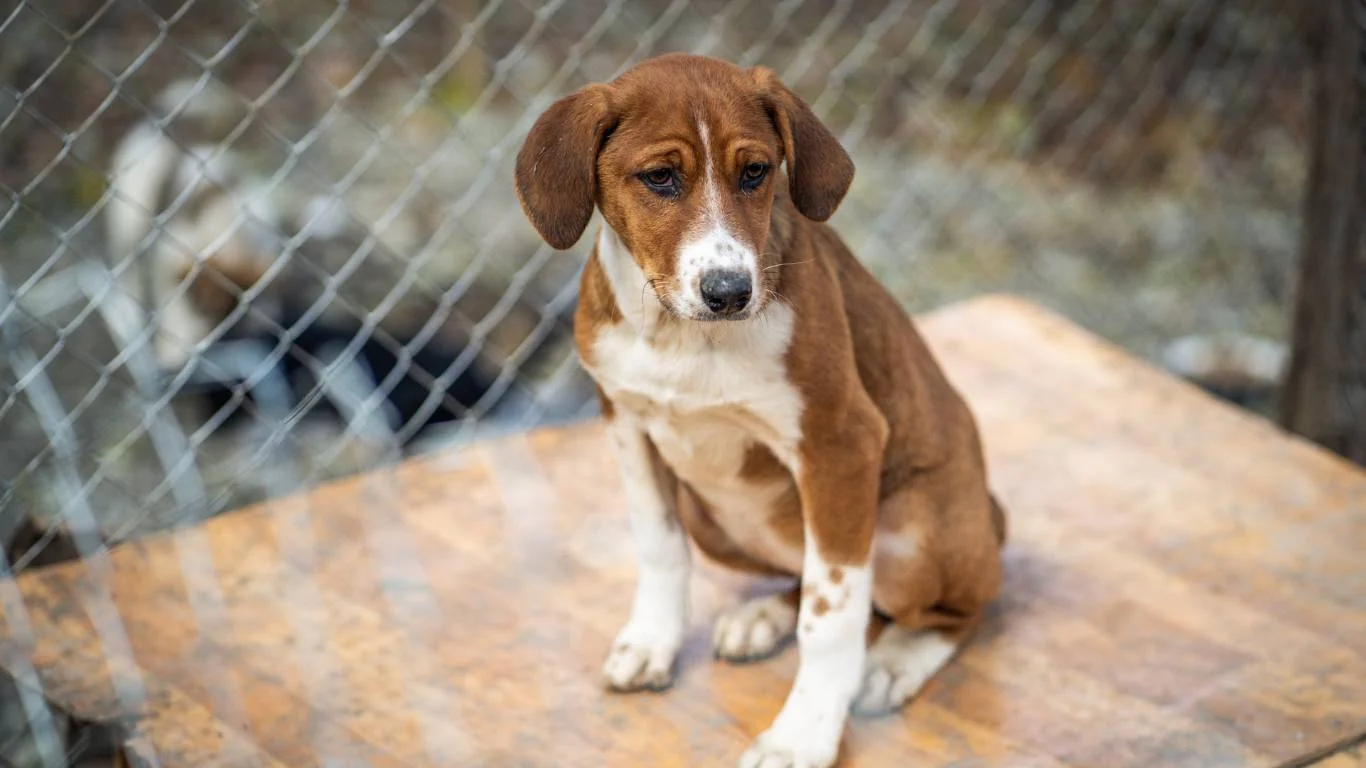How to Help a Dog with Recurring UTIs: Proven Tips for Long-Term Relief
If you’ve ever wondered how to help a dog with recurring UTIs, you’re definitely not alone. I get this question a lot in the clinic. As a Veterinary Assistant with a special focus on pet nutrition, I’ve seen more cases of chronic urinary tract infections in dogs than I can count. And honestly? It can be heartbreaking watching a pup go through it over and over again — the discomfort, the accidents, the worried looks from their humans. The good news? There are actually quite a few things you can do to help. Let’s dive into what’s going on and how you can make life a whole lot better for your furry friend.
What Exactly Is a UTI in Dogs?

Alright, before we jump into solutions, let’s break it down. A urinary tract infection (UTI) in dogs is just like in humans — it’s when bacteria sneak their way into the urinary system and cause inflammation, discomfort, and often some messy symptoms. Most commonly, the bacteria involved is *E. coli*, but there can be other culprits too.
In my day-to-day work at the clinic, I see UTIs show up in all kinds of ways, but some of the tell-tale signs include:
- Frequent urination or attempts to urinate
- Whining or showing discomfort when peeing
- Blood in the urine (sometimes visible, sometimes not)
- Urinating in unusual places or having accidents indoors
- Licking around the urinary opening
Sound familiar? Then yep, you’re probably dealing with a UTI — and if it keeps coming back, that’s a recurring UTI, which needs a different level of attention.
Why Do Some Dogs Get Recurring UTIs?

This is one of the biggest questions I get asked, and it’s a good one. Chronic or recurring UTIs usually mean there’s an underlying issue that hasn’t been fully addressed. From what I’ve seen, here are some of the most common root causes:
- Underlying medical conditions like diabetes, Cushing’s disease, or bladder stones. These can create a perfect storm where bacteria thrive.
- Incomplete treatment of previous infections. Sometimes, antibiotics are stopped too soon or the wrong antibiotic is chosen.
- Poor hygiene, especially in female dogs with longer fur around the urethral area. Bacteria can travel quickly when things aren’t kept clean and dry.
- Anatomical abnormalities — I had a sweet pup patient once, a young Yorkie, whose urethra was slightly misshapen. Once that was corrected, her UTIs practically disappeared.
- Diet and hydration. Huge factor. Some diets make urine more alkaline or encourage crystal formation, both of which can make things worse.
One thing I always remind pet parents: recurring UTIs are not just bad luck. There’s almost always something deeper going on.
How to Help a Dog with Recurring UTIs Naturally (And Effectively)

Hydration Is Key — And Often Overlooked
I cannot stress this enough. Getting your dog to drink more water is one of the simplest yet most effective ways to fight off UTIs. Water helps flush out bacteria and keeps the urinary tract healthy.
Here are a few tricks I often share with clients:
- Add a splash of low-sodium bone broth to their water bowl
- Offer ice cubes as treats (some dogs love them!)
- Incorporate wet food or mix it with dry kibble to boost moisture intake
It sounds basic, but it really works — and you’d be amazed how many dogs are quietly dehydrated every day.
Cleanliness Around the Urethral Area
Especially in female dogs or long-haired breeds, keeping things clean down there can prevent bacteria from taking hold. I usually recommend gently wiping the area with a fragrance-free, vet-approved wipe after walks or bathroom breaks — especially if the ground is muddy or wet.
Regular Vet Checkups and Proper Testing
This one seems obvious, but it’s easy to overlook. If your dog keeps getting UTIs, don’t just treat the symptoms — get to the root of it. Your vet might suggest:
- Urinalysis and urine culture (to ID the exact bacteria)
- Blood work to rule out underlying conditions
- X-rays or ultrasounds to check for stones or tumors
It’s not just about throwing antibiotics at the problem. Trust me, I’ve seen dogs bounce back beautifully once we figured out the real cause behind their infections.
Diet Changes Can Make a Huge Difference
This is my favorite part, honestly — as someone who focuses on pet nutrition, I’ve seen the power of diet firsthand. Certain foods can help support urinary health and reduce UTI recurrence.
Look for:
- Formulas with added cranberry extract or D-mannose — these ingredients help prevent bacteria from sticking to the bladder wall.
- Diets that promote slightly acidic urine pH — helps discourage bacterial growth.
- Limited-ingredient diets if your dog has allergies or sensitivities that might be stressing their system overall.
I once worked with a golden retriever who had UTIs every few months. Once we got her on a specialized urinary support diet and increased her water intake, she went a full year without a single infection. Her owner was thrilled (and honestly, so was I!).
Supplements That Can Support Urinary Health

Supplements can be an absolute game-changer when you’re trying to figure out how to help a dog with recurring UTIs. I’ve worked with countless pet parents who didn’t even realize there were over-the-counter options specifically made to support urinary function. Some dogs just need that little extra boost, especially if they’re prone to infection or have had a history of issues.
Here are a few that I regularly recommend (after checking with a vet first, of course):
- D-Mannose: A naturally occurring sugar that helps prevent bacteria like E. coli from sticking to the bladder wall. It’s gentle, effective, and often found in powder form.
- Cranberry extract: Not just a home remedy — when used properly, it can actually reduce the frequency of UTIs by maintaining a healthy urinary tract environment.
- Probiotics: Gut health and immune function are super connected. A good canine-specific probiotic can strengthen your dog’s ability to fight off recurring infections.
- Omega-3 fatty acids: Found in fish oil, these reduce inflammation, which can be helpful if your dog has chronic irritation in the urinary tract.
One of my regular patients, a schnauzer named Millie, had nonstop infections until we added a D-Mannose and cranberry chew into her daily routine. Within a couple of months? No more symptoms, no more vet visits (well, except her regular checkups, of course).
When Antibiotics Aren’t Enough

Here’s something not everyone talks about — antibiotics aren’t always the magic fix. Sure, they knock out the bacteria in the moment, but if the root cause is still lurking (like stones or an underlying illness), the infection will just keep bouncing back. I’ve had a few tough cases where dogs were put on antibiotics repeatedly with no long-term success — until we started looking deeper.
Here’s what I usually suggest in those situations:
- Get a culture and sensitivity test. This helps identify the exact bacteria causing the infection and tells us which antibiotics will actually work. Blindly guessing isn’t the move.
- Explore diagnostic imaging. X-rays or ultrasounds can reveal bladder stones, tumors, or structural issues that are otherwise invisible.
- Ask your vet about a longer course of treatment. Some recurring UTIs require a longer antibiotic plan — we’re talking 4-6 weeks in some cases — to fully clear the infection.
Oh, and super important: always finish the prescribed meds. I know it’s tempting to stop early if your dog seems better, but I’ve seen so many relapses from stopping too soon. Bacteria can be sneaky like that.
The Role of Stress and Environment

Here’s one that surprises people: stress absolutely affects a dog’s urinary health. I’ve seen it firsthand. A dog’s immune system can take a hit when they’re anxious or not mentally stimulated, and that opens the door for infections to take hold.
Changes like moving to a new house, a new baby, or even a new pet in the home can cause enough emotional disruption to affect bladder health. Some pups are just that sensitive. I had one rescue shepherd mix named Luna — she started having recurring UTIs right after her family adopted a second dog. Once we helped manage the stress (and gave her a little extra one-on-one time), her symptoms improved dramatically.
Here are a few easy ways to reduce stress for your dog:
- Create a consistent routine for meals, walks, and bedtime
- Use calming pheromone sprays or diffusers in their space
- Try mentally enriching toys, treat puzzles, or scent work
- Make sure they have a quiet, safe zone to retreat to when they need downtime
It may sound a little “out there,” but in my experience, a relaxed dog really does mean a healthier dog — including fewer UTIs.
Breeds More Prone to UTIs (And What to Watch For)
Some dogs, unfortunately, are just more likely to struggle with urinary issues than others. I wish it weren’t true, but genetics play a part. Over time, I’ve noticed patterns in the clinic, and some breeds consistently show up with UTI concerns more than others.
Here are a few breeds that seem to be more prone:
- Shih Tzus and Yorkies: Tiny bladders and long hair can create the perfect storm for bacteria growth.
- Miniature Schnauzers: This breed is susceptible to both UTIs and bladder stones — double trouble.
- Dalmatians: Known for forming urate crystals, which can lead to chronic urinary issues.
- Female Labs and Goldens: Especially if they’re spayed early, their anatomy can sometimes increase UTI risks.
If your dog is in one of these categories, be proactive. Even if they’ve never had a UTI, it’s worth talking to your vet about preventive care and regular urinalysis checks.
Keeping a UTI Journal (Yes, Really!)
This might sound a little extra, but I recommend it all the time: keep a log. If your dog’s UTIs keep coming back, tracking symptoms, changes in diet, new environments, or medication reactions can help uncover patterns you might not notice otherwise.
Your journal can include:
- Dates of UTI symptoms
- Any medications or supplements being used
- Diet changes or treats added
- Urination frequency and appearance
- Vet visits, diagnoses, and lab results
I had a client who figured out her dog’s UTIs always popped up within a week of swimming in their backyard pond. Once they stopped letting him swim there, the infections stopped too. Journaling helped them connect the dots.
Home Care Hacks That Actually Help

By now, you’ve got a pretty solid grip on how to help a dog with recurring UTIs, but let’s talk about those everyday things you can do at home — small changes that can have a big impact. I’m a big believer in combining veterinary guidance with smart, proactive care at home. It’s like tag-teaming your pup’s health from every angle.
Here are some of my tried-and-true at-home strategies I recommend to pet parents (and yes, I’ve used many of these with my own dog, too):
- Offer bathroom breaks more often: Holding it in for too long lets bacteria multiply. Try taking your pup out more frequently, especially after meals or drinking water.
- Switch to stainless steel or glass water bowls: Plastic bowls can harbor bacteria in tiny scratches. I always tell clients: go for easy-to-clean, non-porous materials.
- Wipe after potty time: Especially helpful for females. Use a soft, unscented baby wipe or a pet-safe hygiene wipe to keep the area clean.
- Encourage movement: Regular walks and play help stimulate bladder activity and reduce retention — a sneaky but common contributor to UTIs.
These sound simple, but sometimes it’s the most straightforward changes that move the needle. One client started walking her dog after every meal instead of just morning and night — not only did the UTIs slow down, but her dog started acting more playful and confident, too.
Hydration Tricks for the Picky Drinkers

Let’s face it — some dogs are just not big on drinking water. I’ve worked with so many picky pups who act like their water bowl is a decoration, not a necessity. And since proper hydration is a cornerstone of urinary health, we’ve got to get creative.
Here are a few hacks I’ve used personally and with clients that work wonders:
- Use a pet water fountain: The sound and movement often entice dogs to drink more. It taps into their natural instinct to prefer running water.
- Flavor the water: Add a splash of no-sodium chicken or beef broth, or try a little tuna water. Just watch the sodium content!
- Offer ice cubes as “treats”: A fun crunchy snack that doubles as hydration. Some dogs even prefer crushed ice over plain water.
- Soak dry kibble: Add warm water or low-sodium broth to dry food to boost moisture intake with meals.
One of my little patients, a stubborn Frenchie named Ziggy, refused to drink plain water. His owner started offering flavored ice cubes — boom, instant success. Sometimes we just need to think outside the bowl.
Partnering with Your Vet Long-Term
This might sound obvious, but I can’t stress enough how much of a difference it makes when pet parents work closely and consistently with their vet. I’ve seen the best outcomes when there’s a long-term management plan in place — not just waiting for symptoms to show up again.
Here’s what I recommend discussing with your vet if your dog is dealing with recurring UTIs:
- Schedule regular urinalysis checks — every 3-6 months, even if your dog seems fine.
- Ask about prescription urinary diets, especially if crystals or stones have been involved.
- Request a urine culture any time symptoms come back, to avoid guessing with antibiotics.
- Explore potential imaging (like X-rays or ultrasound) if infections keep coming back with no clear reason.
Don’t be afraid to advocate for your pup. I’ve had clients tell me they were nervous to ask for extra testing or second opinions. But remember — you know your dog best, and it’s okay to speak up when something feels off.
Staying One Step Ahead: Prevention Is Everything
If I could leave pet parents with one takeaway, it’s this: prevention is so much easier than treatment. Once you’ve dealt with the stress (and vet bills) of recurring UTIs, trust me, you’ll want to do whatever it takes to avoid them coming back.
So here’s a little checklist — things I recommend making part of your regular routine if your dog has a history of UTIs:
- Keep hydration high — every single day
- Watch for early signs — squatting, licking, changes in pee color
- Feed a high-quality diet with urinary support if needed
- Use supplements like cranberry or D-Mannose (talk to your vet first!)
- Maintain hygiene and regular bathroom breaks
- Schedule regular vet checkups — prevention visits, not just when something’s wrong
I had one senior golden retriever patient who hadn’t had a UTI in over two years — all thanks to her mom following a prevention routine like clockwork. Hydration, supplements, the right food, and regular vet care — that combo kept her happy and healthy well into her golden years.
References
Disclaimer
This article is based on personal experience and general knowledge from my work as a Veterinary Assistant with a focus on pet nutrition. It is not a substitute for professional veterinary advice, diagnosis, or treatment. Always consult your veterinarian for specific medical guidance regarding your dog’s health.





